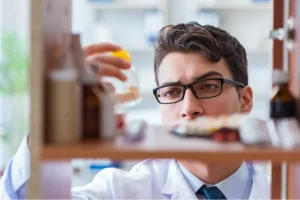
People formed the coalition that was best for their community. As an early-stage investigator, I was integrated with a group of mentors and collaborators that was well-positioned to do this type of study, so when the request for applications came out, we applied. By law, https://ecosoberhouse.com/ only a SAMHSA-certified Opioid Treatment Program (OTP) can dispense methadone for the treatment of Opioid Use Disorder. Your OTP can become accredited and certified to treat substance use disorders. Women who are pregnant or breastfeeding can safely take methadone.
Physical effects
- With treatment, achieving recovery from heroin addiction is possible.
- Methadone medication is specifically tailored for the individual patient (and doses are often adjusted and readjusted) and is never to be shared with or given to others.
- If someone took your blood, they could only detect the pure form of the drug for about 5 minutes.
- Medicines don’t cure your opioid addiction, but they can help in your recovery.
- They’re both opioids that can be highly addictive and misused.
Detox and maintenance medications treat the physical symptoms of drug addiction. Counseling and therapy treat the psychological and behavioral symptoms. These therapies can be delivered in an inpatient or outpatient setting, but residential treatment is recommended after detox or the initiation of maintenance medication.
Drugs, Brains, and Behavior: The Science of Addiction
Having this condition means heroin use has disrupted your life, and you have trouble controlling how much you use. With regular use, tolerance develops where the abuser must use more heroin to achieve the same heroin addiction treatment intensity or effect. As higher doses are used over time, physical dependence and addiction develop. Heroin is metabolized to morphine and other metabolites which bind to opioid receptors in the brain.

FDA-Approved Medications to Treat Heroin Addiction

The drug becomes the center of the user’s universe, eclipsing all other interests and relationships. It’s a lonely, isolating existence that can leave individuals feeling trapped and hopeless. Those body brokers in turn paid thousands of dollars in cash to patients, which some patients used to purchase drugs, to induce those patients to attend treatment at Mahoney’s facilities. The emergence of rock and roll and Motown would soon devastate jazz musicians’ ability to earn a living. After the 1960s, there would be no more superstars on the level of Coltrane and Miles.
Behavioral therapy

Organizations like Narcotics Anonymous provide a community of individuals who understand the struggles of addiction and can offer guidance and encouragement. To truly grasp the insidious nature of heroin addiction, we must first understand how this drug wreaks havoc on the human brain and body. Heroin, like other opioids, hijacks the brain’s reward system, flooding it with dopamine and creating an intense euphoria that users quickly come to crave. It’s like a twisted love affair, where the brain falls head over heels for a substance that ultimately betrays it. They faced travel restrictions imposed by parole officers and eviction troubles, and their unstable behavior strained already precarious family arrangements.
As with most drug side effects, this release is only temporary — which leaves some people wanting more of the “good” feeling. Drugmakers often mix heroin with other substances to make their product bulkier, cheaper, and stronger. This may include fentanyl, a powerful painkiller that’s often made and sold illegally. You can easily overdose and die on fentanyl, especially if you don’t know that it’s in the heroin you’re taking. While relapse is a normal part of recovery, for some drugs, it can be very dangerous—even deadly.
Heroin Addiction Treatment and Rehab Centers Near Me
The late 1940s and 1950s were the peak era of heroin consumption for jazz musicians. In The Making of Jazz (1978), historian James Lincoln Collier claims that as many as three-quarters of all musicians used heroin during this period. Projecting that rate to New York as a whole meant 700 to 800 working jazz-musician addicts based in the city in 1955. Four out of the six musicians on Kind of Blue (1959), the best-selling jazz album of all time, were heroin addicts at some point.
- These therapies can be delivered in an inpatient or outpatient setting, but residential treatment is recommended after detox or the initiation of maintenance medication.
- The Beats, in particular, found the heroin-jazz nexus seductive.
- Talk to your doctor or go to a substance use clinic if you can’t stop using heroin on your own or you’re afraid of what might happen to your body and mind once you quit.
- If you’d like to get help stopping heroin use, you have a lot of options.
- Heroin addiction can often co-occur with other types of addictions and mental health disorders.
What Is The Most Effective Treatment For Heroin Addiction?
- Many outstanding jazz musicians were nonaddicts; Bird’s contemporaries Dizzy Gillespie and Clifford Brown come to mind.
- Outpatient heroin rehab treatment allows you to return home outside of treatment hours.
- Heroin overdose is a medical emergency that requires treatment with naloxone.
- Booking agents avoided small remote cities if band members couldn’t score there.
- Heroin addiction stories often paint a vivid picture of this descent into despair.
- “First rehab I went to was like university on how to be a better drug addict.”